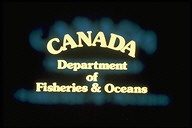
Saltfish was produced in many qualities and sizes destined for markets in Spain, Portugal, Italy, Greece, Brazil and the West Indies. However, the developments and problems of Newfoundland between 1800 and 1914 have a familiar ring.
The biggest watershed in the history of the early Newfoundland cod fishery occurred during the war period between 1793 and 1815 when Great Britain was almost continuously at war with France, and for a short period, at war with the United States as well. An almost unlimited demand for saltfish resulted in high prices and a 100% increase in both population and exports. At the end of the wars prices collapsed as the other saltfish competitors reappeared in the marketplace, and supplies of saltfish on world markets exceeded demand. In the past when this kind of development occurred the number of fishermen living on the island always declined.
Newfoundland's jurisdiction over its resources, coastline and coastal waters was a major issue in the nineteenth century. The West Coast and the Northern Peninsula were outside the control of the local government from the beginning of the century. However, that did not stop every Newfoundland government, especially after Responsible Government was acquired in 1855, from constantly seeking to extend its control over this area. Despite firm denials from the British Government that this could ever happen, in 1904 after Newfoundland's sixty-year campaign, Britain and France signed an agreement which gave up this area to Newfoundland. Similarly, the colony fought for over thirty years to get control over its own bays which were frequented by foreign ships, particularly from America, in search of bait for the bank fishery. In 1910 the Hague Tribunal (the international court) awarded control over its bays to Newfoundland.
In the 1800's when the deepening crisis required more government action, two main developments were pursued by governments. Pro-fishery governments supported lobster and cod hatcheries and also concentrated on the development of a major bait fishery. Newfoundland bait, especially herring, was beginning to become enormously important to the French and American banking fleets and it was thought by some that Newfoundland could become the principal supplier at considerable profit. However, the colony was never able to fully exploit its bait supplies and the lobster and cod hatcheries produced mixed results and they were abandoned in the 1890's. However, for a period Newfoundland took a major lead in fisheries research and experimentation.

Meanwhile Newfoundland was part of the technological revolution in other ways in addition to the railway mentioned above. The French introduced the "bultow" (or as Newfoundlanders call it today - the "trawl") into their fishery of the 1840's. This was more efficient than fishing simply by hook and line because it involved hundreds of metres of line with hundreds of hooks. It was not much use to the colony's inshore fishery because one needed considerable space to engage in it. However, it was ideal on the banks and encouraged the French to abandon the inshore fishery for the offshore. It was this development which made bait so essential.

In 1866 Captain William H. Whiteley invented the cod trap at his fishing station in Bonne Esperance and, beginning in the 1880's, it became an important feature of the inshore fishery of both Newfoundland and Labrador. It increased the size of fishing crews and changed the fishing operations somewhat. This had an impact on the role of women in the fishery because it allowed the men to spend more time ashore and thereby relieved the women of much of the work of splitting and salting and curing the cod. The introduction of the internal combustion engine rationalized the process even further.
Newfoundland was affected by technological developments during this period. Sometimes in a positive way as with the cod trap and the gasoline engine; sometimes in ways which were mixed as with the introduction of the steamers.